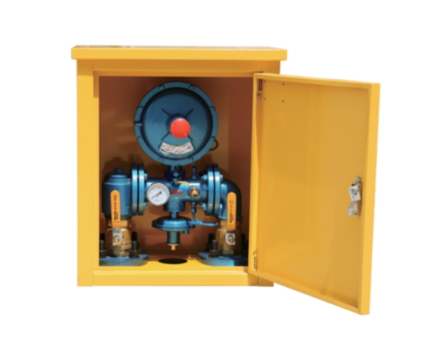
Dec . 10, 2024 02:14
Back to list
Understanding Pressure Reduction Mechanisms for Enhanced System Efficiency
Understanding Pressure Reducing Valves (PRVs)
Pressure reducing valves (PRVs) are essential components in various systems that require the regulation of fluid pressure. These devices are crucial in maintaining safety, efficiency, and functionality in industrial, commercial, and residential applications. This article explores the importance, functions, and types of pressure reducing valves, highlighting their role in modern engineering and daily usage.
What Is a Pressure Reducing Valve?
A pressure reducing valve is a mechanical device used to automatically reduce and maintain fluid pressure to a predetermined level. It achieves this by allowing high-pressure fluid entering the valve to flow out at a lower, controlled pressure. This regulation is vital to prevent damage to equipment, ensure safety, and optimize performance.
PRVs are typically installed in systems where varying pressure levels are needed, such as water supply networks, heating systems, irrigation systems, and even in manufacturing processes where the control of fluid flow is critical.
How Do Pressure Reducing Valves Work?
PRVs function based on the principles of pressure differentials. When high-pressure fluid enters the valve, it acts against a diaphragm or piston within the valve. This mechanism adjusts the outlet flow, ensuring that the downstream pressure remains stable, despite fluctuations in the upstream pressure.
As the downstream pressure increases to the set point of the valve, the mechanism reduces flow by closing the valve partially, thereby stabilizing the system. Conversely, if the downstream pressure drops below the set point, the valve opens to allow more fluid through, maintaining the required pressure.
.
1. Safety One of the primary functions of PRVs is to safeguard equipment and systems from overpressure. Excess pressure can lead to leaks, ruptures, or catastrophic failures, resulting in potential injuries and significant financial loss. PRVs help mitigate these risks by maintaining a safe operating pressure.
مخفض الضغط

2. Efficiency By regulating pressure, PRVs contribute to the overall efficiency of a system. For instance, in water distribution systems, PRVs help reduce water waste and energy consumption by eliminating unnecessary pressure. This efficiency is not only environmentally beneficial but also cost-effective.
3. System Longevity Maintaining optimal pressure levels helps extend the lifespan of piping and equipment. Over time, exposure to high pressures can lead to erosion and mechanical failures. By using PRVs, facilities can ensure that their infrastructure remains in good condition, ultimately saving on maintenance and replacement costs.
Types of Pressure Reducing Valves
Pressure reducing valves come in various types, each designed for specific applications
1. Direct Acting PRVs These are commonly used in residential and light commercial applications. They operate using a simple diaphragm mechanism and adjust pressure based on the differential between upstream and downstream pressures.
2. Pilot Operated PRVs These valves utilize a pilot mechanism to control the main valve, allowing for greater precision in pressure regulation. They are ideal for larger industrial applications where maintaining consistent pressure is critical.
3. Electric or Electronic PRVs With advancements in technology, electric or electronic PRVs have emerged. These valves utilize sensors and actuators to provide more accurate and responsive pressure control. They can be integrated into automated systems for real-time monitoring and adjustments.
Conclusion
Pressure reducing valves are indispensable components in fluid management systems. Whether in a residential plumbing system or a complex industrial setup, their role in regulating pressure cannot be overstated. By ensuring safety, enhancing efficiency, and extending the lifespan of equipment, PRVs contribute significantly to the reliable operation of various systems.
As technology continues to evolve, the functionality and design of pressure reducing valves will likely improve, further increasing their importance in modern engineering. Understanding and utilizing these devices will help engineers and operators maintain optimal performance in their respective fields. In a world where efficiency and safety are paramount, the role of pressure reducing valves will remain crucial for many years to come.
Latest news
-
Safety Valve Spring-Loaded Design Overpressure ProtectionNewsJul.25,2025
-
Precision Voltage Regulator AC5 Accuracy Grade PerformanceNewsJul.25,2025
-
Natural Gas Pressure Regulating Skid Industrial Pipeline ApplicationsNewsJul.25,2025
-
Natural Gas Filter Stainless Steel Mesh Element DesignNewsJul.25,2025
-
Gas Pressure Regulator Valve Direct-Acting Spring-Loaded DesignNewsJul.25,2025
-
Decompression Equipment Multi-Stage Heat Exchange System DesignNewsJul.25,2025

